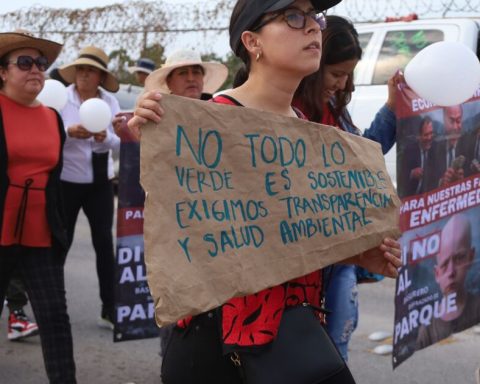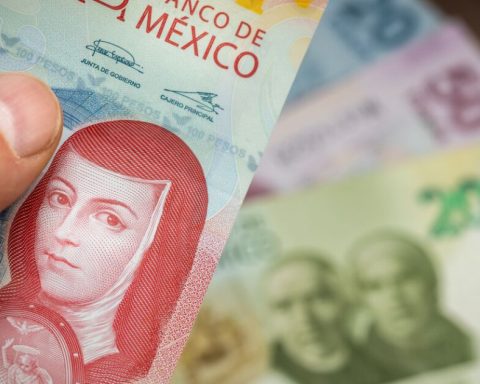Gold purchases by the world’s central banks rebounded 152.32% and reached a record figure during 2022, thanks to the attractiveness that institutions saw in the asset amid market volatility and high inflation rates.
From January to December last year, the demand from central banks amounted to 1,135.7 tons, according to data from the World Gold Council (WGC).
The volume of demand over the past year is the highest number the WGC has on record (its oldest data is from 2010), plus the growth rate is the highest since 2011.
With this, the world’s central banks closed 2022 with a total of 35,715 tons of gold reserves, with a total value of 2.1 trillion dollars.
The central bank that bought the most gold last year was Turkey’s, which added 148 tons of the precious metal to its coffers, according to WGC data. It closed 2022 with total reserves of 542 tons.
The Bank of Mexico (Banxico) closed 2022 with total reserves of 120.03 tons of gold, the same figure with which it ended 2021. The total value of the reserves amounted to 6,999 million dollars at the end of last December.
The WGC explained in its latest report “Gold Demand Trends” that according to its most recent survey, there are two key factors that motivate central banks to hold gold reserves: their performance in times of crisis and their role as long-term store of value.
“It is not surprising that in a year marked by geopolitical uncertainty and rampant inflation, central banks chose to continue adding gold to their coffers at an accelerated rate,” the WGC said.
Ana Azuara, Commodity Analyst at Banco Base, explained that the Central Bank of the Republic of Turkey has been forced to buy gold, due to high inflation in the country. “Gold serves as a way to hedge against inflation,” she said.
The analyst said that unlike other central banks that have implemented a restrictive monetary policy, Turkey’s has cut its interest rates, which has led to extremely high inflation rates.
Last year, inflation in Turkey reached a level of 85%, although by December it dropped to 64%,” said Ana Azuara.
According to the WGC report, most of the gold purchases by central banks were made by developing countries, “extending the trend started in 2010”, the year from which they became net buyers of gold. that is, they buy more than they sell.
“The most significant announcement came late last year, when the People’s Bank of China (PBOC) reported the first increase in its gold reserves since September 2019,” the WGC said. “These announcements were significant given China’s historical position as a large buyer of gold.”
In November and December, the Chinese central bank announced purchases of 62 tons of gold, bringing its total reserves to more than 2,000 tons for the first time in history, the report said.
Fed in the lead
Of all the central banks, the United States Federal Reserve (Fed) is the one with the largest amount of reserves at the end of 2022, with a total of 8,133.5 tons.
In second place was the German Federal Bank, with a gold reserve of 3,355.1 tons, followed in third place by the International Monetary Fund (IMF), which had 2,814.0 tons of the metal.
Italy and France were in fourth and fifth place, with reserves of 2,451.8 and 2,436.8 tons, respectively.
Mexico, with reserves of over 120 tons, was ranked 35th, surpassed by emerging countries such as Brazil, Turkey and India.
historical demand
Growth in central bank purchases of gold led to overall demand for the precious metal reaching an 11-year high in 2022.
Total global gold demand amounted to 4,740.7 tons, a year-on-year increase of 18.14%, according to the WGC.
Gold inventories on the surface closed 2022 at 208,874 tons, with a value of 12.2 billion dollars.
The figure for total demand is obtained by adding the purchases of central banks, the demand for jewelry, technology and investments (bars, coins and ETFs).
Demand for jewelry fell 1.83% to 2,189.8 tons in the year, while technology decreased 6.56% for a total of 308.5 tons.
In its report, the WGC explained that the drop in demand for jewelry is explained by the rebound in prices that the precious metal experienced during most of 2022, in addition to the fact that there were fewer purchases in China due to the blockades imposed to contain the Covid-19 at the end of the year.
For its part, the demand for gold for investments (bars, coins and ETFs) grew 10.47% to 1,106.8 tons.
Featured use Futura LT Pro Book in white on Eco Blue at 11 over 13 pts with no bleed. Aligned to the right with a 2 pt indent on the sides and Bold type at the beginning of the idea.
















